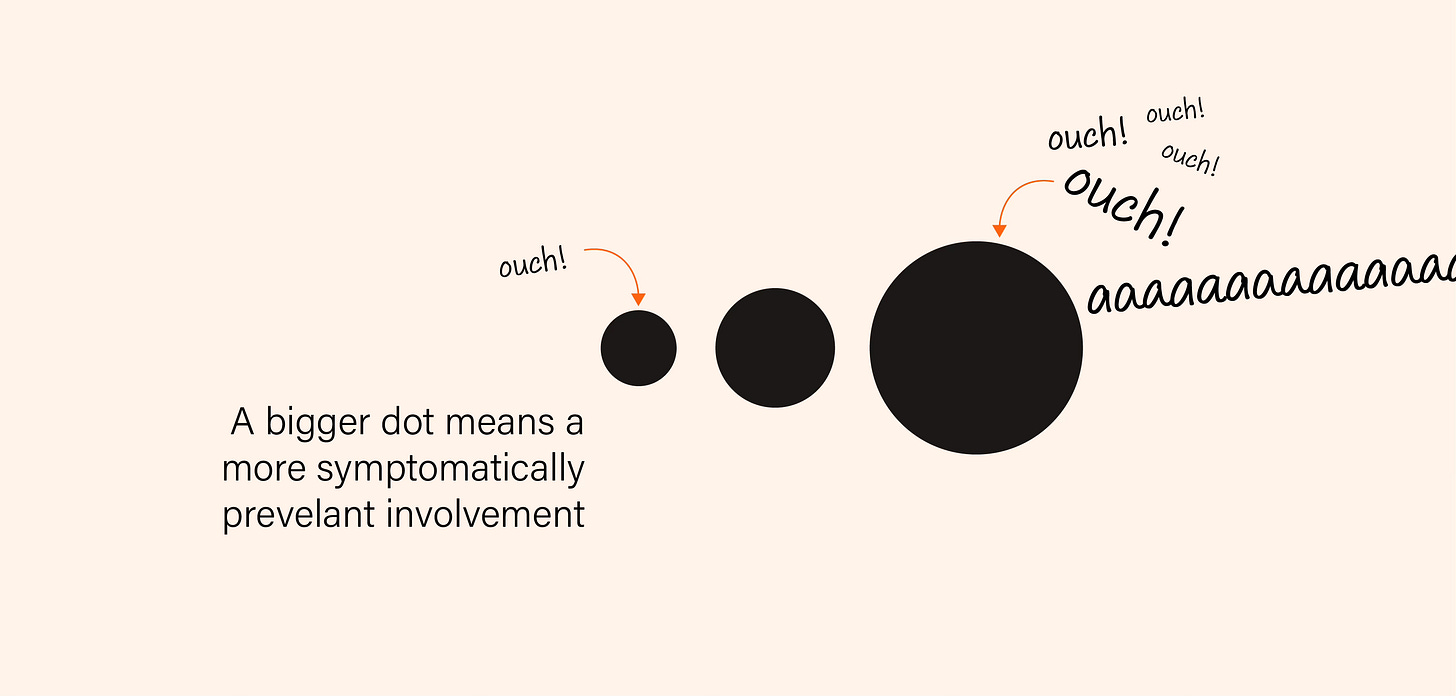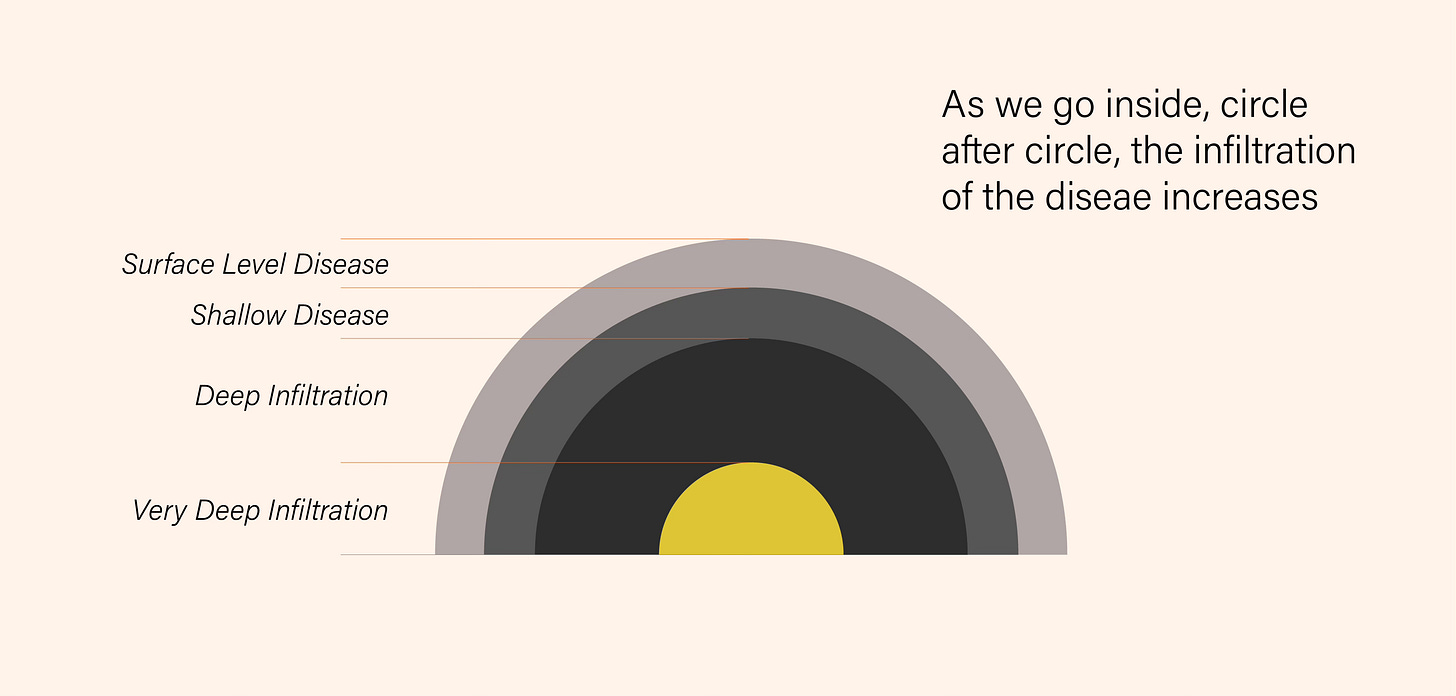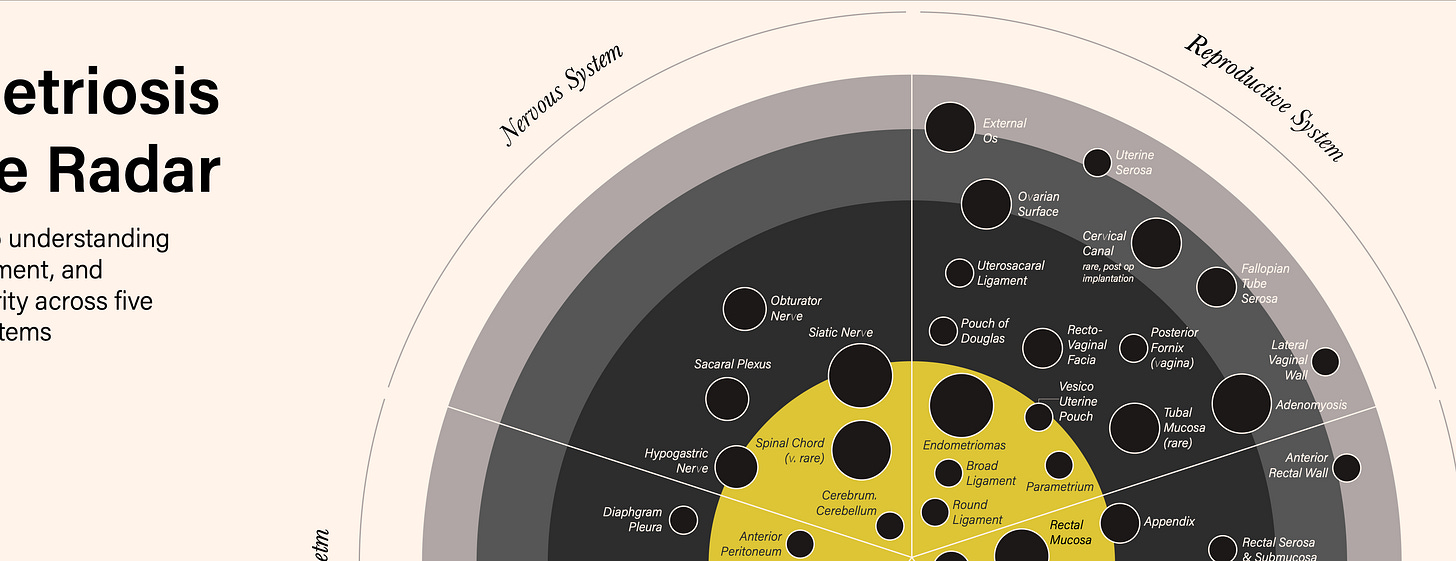Good evening doc,
Today’s edition comes in a bit late mostly because we over engineered a visualization we wanted to put into today’s edition. Why? Well because sometimes one gets carried away. But also because we thought after all these weeks of talking about the disease, you deserve to take a step back, and just let all that complexity sink in.
In today’s edition we go through 5 different organ systems, and look at how the disease is involved in each of them, with what severity, and with what likely symptomatology.
The last one is a bit tricky, but surgeons have to work with what we know, what we’ve seen, and what is most likely.
It’s not boring I promise!
Right now you might be thinking, oh my go, how pathetic. I don’t want to go through a list of sites of occurrence. I get it. How very dumb.
So, we decided to make it visual instead.
We first picked the 5 organ systems that endometriosis mostly frequently attacks
Reproductive System — Vagina, cervix, uterus, fallopian tubes, ovaries
Gastrointestinal System — Rectum, sigmoid colon, descending, transverse, and ascending colon, illeocecal junction, ileum, appendix
Renal System — urethra, bladder, ureter, kidneys
Circulatory & Lymphatic System — peritoneum, diaphragm, vessels, lymphatics, thoracic cavity
Nervous System — Central and peripheral nerves, spinal chord, brain, nexus plexus, nerve roots / ganglia
In each of these systems, the disease might occur at several spots. And at each spot, it might have any level of involvement.
To make matters more complex, whether deep infiltrating or shallow, the disease may show varying symptoms, from severe to nothing at all, making diagnosis complex, cumbersome, and non-deterministic.
So we decided to make it simple. We will now go step by step and visualise different involvements
First, take this dot. This is one occurrence of the disease. A lesion, a nodule.
Small dot means absent symptoms and big dot means painful symptoms.
Now let’s look at disease involvement
More inside means more involvement
Things like involvement of the external os or uterine serosa will be towards the outside.
But external os involvement will be more symptomatic than the uterine serosa. Same goes for involvement of the ovarian surface.
Depending on what theory you believe in about the origin of endometriosis, you might disagree with me on what is deep and what is shallow involvement but that’s not an argument me or my sleep deprived self consider worthy. This is what we know, and it’s what we will fly with. Tomorrow, if new evidence emerges, we say thank you very much and embrace it.
Now, since you’re comfortable with the visualisation, let’s blow it up for the reproductive system.
Notice how involvement is considered very deep when the broad ligament and round ligament are involved, but the patient might not find out about it just through her symptoms.
On the other hand, adenomyosis, which is otherwise also considered as endometriosis interna, can be considered shallow and yet show very significantly in the patient’s daily life.
With that, let me introduce you to the full scale Endometriosis Radar
Of course, it’s hard to read at this resolution so we have placed a full scale resolution here. But here are some close up glimpses.
You will notice that almost all of the involvement of the nervous and circulatory system is deep in nature while a lot of the involvement in the reproductive system is considered relatively shallow. The disease has to travel and latch on to things a fair bit before it can get anywhere.
It’s not that easy. So when you meet someone with deep involvement, know that there is also likely a story waiting for you on how the patient’s early warning signs were ignored and gaslit.
This distribution tells us a story of complexity on one hand and progress on the other. While we continue our battle with the disease, we have also come very very far in our understanding and ability to manage it.
It’s that edge that we must always keep pushing. So that women tomorrow can demand a life better than that available to women today.
That’s it from us this week. We will see you next Wednesday.




















as a woman with endo, thank you. I have found your newsletter to be such a valuable insight. I am 48 and I was only officially diagnosed with endo and adeno last year after suffering since I was 15. Thank you for helping us.